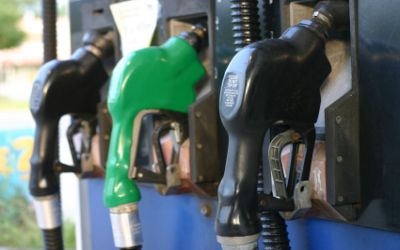
Retail gasoline prices hit seven-year highs this summer. And despite some claims that the causes of the skyrocketing gas prices at the pump are a result of the Renewable Fuels Standard, a new analysis from the Renewable Fuels Association finds that there is no evidence RFS’s compliance credit market mechanism has any impact on retail gasoline prices.
“The truth is that the drivers of gasoline prices are the same as they have always been: crude oil prices and supply/demand factors,” the RFA analysis notes.
RFA Chief Economist Scott Richman found that the main driver of recent higher retail gas prices is higher crude oil prices. He calculates that retail gasoline prices have had a correlation of 0.96 with West Texas Intermediate crude oil prices on a monthly basis from January 2013 to July 2021 (with 1.00 representing a perfect correlation and 0.00 representing no correlation whatsoever).
On the other hand, the correlation between gasoline prices and the prices of ethanol renewable identification numbers (referred to as D6 RINs) has been -0.05, indicating virtually no relationship, the analysis adds.
The U.S. Energy Information Administration estimates that the cost of crude oil accounted for more than half of what consumers paid for gasoline from 2011 to 2020, and crude oil and taxes together represented nearly three-quarters of the total. Costs and profits at the refining and distribution/marketing stages of the supply chain each accounted for 14%.
“Higher gasoline prices this summer were caused primarily by OPEC+ oil production cutbacks and an increase in gasoline demand,” writes Richman. “Additionally, supply issues such as the Colonial Pipeline shutdown and refinery closures due to Hurricane Ida accentuated price pressures at times. RINs are a convenient target for accusations since they are not widely understood, but as the analysis confirms, RINs do not contribute to higher retail gasoline prices.”
A RIN is generated when a gallon of ethanol is produced, and it is separated when the ethanol is blended, at which point it can be submitted for RFS compliance, held in inventory or sold. Obligated parties under the RFS (mainly refiners) can secure RINs by blending biofuels, or they can purchase RINs from other entities. A considerable body of research has shown that the wholesale price of gasoline incorporates the price of RINs, allowing refiners to recover their costs, explains Richman.
When ethanol is blended at the terminal and a RIN is separated, the RIN has value and can be sold (or retained if the blender is an obligated party). This value is used to offset the higher wholesale gasoline price that reflects the RIN cost to the refiner, and the net result is that the retail price of gasoline paid by consumers is essentially unchanged, the analysis continues.
RFA President and CEO Geoff Cooper put the report’s findings into context: “The topic of RFS compliance and RINs can be complex and confusing, and oil refiners have used that complexity to their advantage in their relentless campaign against the RFS. One minute the refiners claim RIN prices cause higher retail gas prices, implying that they somehow fully pass RIN costs on to consumers. Then the next minute they claim RINs are eating into their bottom line because they can’t pass costs along to the pump. Neither of those arguments holds water, as this new analysis shows.
“The truth is, merchant refiners fully recoup RIN costs by passing them along to wholesale buyers at the terminal; then the RIN value is fully offset when ethanol is blended with gasoline. There is no impact to the consumer.”
Cooper also stressed that the debate over RINs wouldn’t even exist today if refiners had appropriately reacted to the investment signals sent when the RFS was expanded nearly 15 years ago. Refiners who acquire and blend physical volumes of renewable fuel—the original intent and purpose of the RFS—secure RINs free of charge.
The new analysis is consistent with similar studies conducted by Informa in 2015 and 2017.
About the Author(s)
You May Also Like






